Based on the struggle against the Hyksos, Egypt became a strong state, firmly united and based on a strong and reliable military bureaucracy. The state is absolutist, just like the Old Kingdom was, but now the government is not based on the Pharaoh’s divinity than on to his political skills and charisma.
EIGHTEETN DYNASTY (1550 – 1295)
Ahmes I. (Ahmosis I, Ahmose I) Nebpehtire (1550 – 1525)
After ten years of truce, Pharaoh has reached a certain age that is when a decisive fight for the liberation of Egypt has started. He expelled Hyksos out of the country and he fought against them for three years in Palestine and after that, he attacked them from Phoenicia. After he conquered city Sharuhen in that way he established a line of defense from the north.
He is considered as the founder of a new dynasty, although he continues the line of family that already ruled for several generations in Thebes. He returned an Egyptian authority over Lower Nubia where he fought with the leader of the rebels Tetian.
Amenhotep I (Amenofis- gr. name) (1525 -1504)
He took care of the country’s internal problems. He established the imperial-colonial policy towards the countries of the Middle Asia and Africa. There was a rapid development of the army; chariots, weapons made of iron (iron sword is an invention of that period) and bronze. In addition, a permanent aristocratic army was introduced, and soldiers became a privileged layer that enjoys going to war because that means wealth.
He led the military campaign in Nubia, built a system of fortifications along the border and he expanded a strategic impact on Palestine, Syria and the Euphrates, which culminates during reign of Tuthmosis III.
He built a chapel made out of alabaster, which successive rulers built into the pylon at Karnak. He was a founder of the craftsmen and artisans village at Deir el Medineh. For a long time they worshiped his cult along with his mother Ahmes-Nefertari.
Tuthmose I (Tuthmosis I) (1504 – 1492)
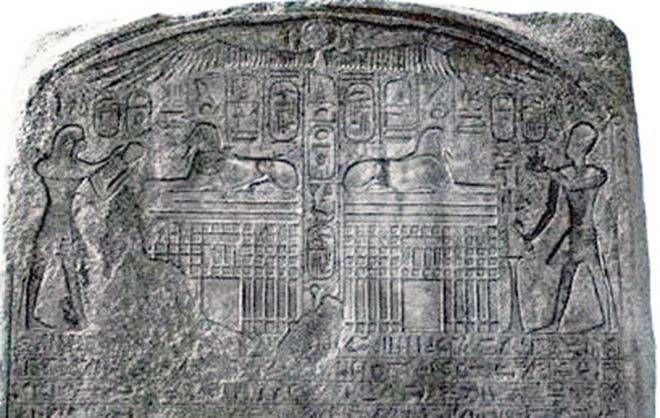


This Pharaoh was not a direct successor of Amenhotep I, but he was his son in law. As soon as he took the throne, he sent notices to everyone about his titles, names and the way in which they will address him. During second year of the reign, he suppressed the rebellion in Nubia and he expanded his power all the way to the third cataract of Nile. After that, he burst into Syria and conquered everything all the way to the Euphrates. At that time, Crete and Cyprus were under Egypt patronage. Thutmose however failed politically and legally to organize new conquered areas. Thutmose III succeeded in that.
Tuthmosis II (1492 – 1479)
He ruled only for four years, and with the main wife Hatshepsut, he had only one daughter (Nofrure).
Hatshepsut (1473 – 1458)
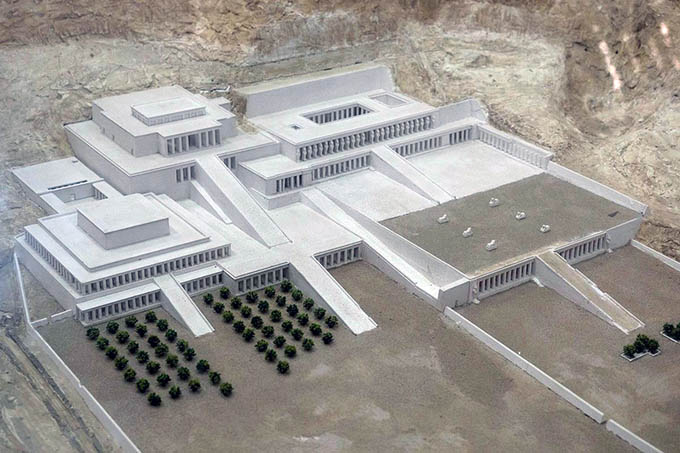


She took the regency for her minor son which Thutmose II had with his wife Isis. First, she ruled like a prince (eg-repat), and then as Pharaoh. Her coming to throne was facilitated by the glory of queens Tetisheri, Ahotep, and Ahmes-Neferteri, which had a major role in the liberation of the country from the Hyksos and the fact that she was the daughter of Pharaoh Tuthmose I. Her reign was without military campaigns, and her great naval expedition to the Punt land is very well known, because from that moment Punt started to recognize an Egyptian leadership (today’s Somalia), the Red Sea, and the Indian Ocean. Her expedition was shown in her mortal temple at Deir el Bahri. The ruler of Punt Paher and his wife were shown; and from this country, Egyptians brought myrrh, ebony, incense, ivory, leopard skins, monkeys, dogs, and so on.
Among the most famous people whom she gathered around her were Hapuseneb and Amon priest Senenmut.
He took care of the economy and had titles that meant that he was to be one of the most powerful men in the country. Senenmut was the queen’s adviser, and even a lover;
She was even considered so passive that her ascent to the throne she could thank to Amon’s priesthood, which considered her as the legitimate successor Tuthmosis I. because she was the daughter of his main wife Ahmes, while Thutmose II was the son of secondary wife.
Senenmut was particularly responsible for the Queen’s building program, and personally, he designed the huge temple in Deir el Bahri. The center of the temple is called Djéser-Djéser, i.e. Holy of Holies.
He intended himself a tomb next to her temple, in a hidden place. Historians believed that he exaggerated in using his position, so the queen herself deprived him of all honors.
Two of his tombs exist, but he was not in one of them buried, and his character, which was dared to be placed inside the holy place, was destroyed. One tomb is hidden next to Hatshepsut temple, while other tomb is in Gurna. Historians believed that after that the queen became insecure which led that Tuthmosis III came to throne. It is not known whether she died of natural causes or Thutmose III killed her.
After her death Thutmose III destroyed all representations of Hatshepsut, her name was erased and he wrote his name or their father over hers. Even around her obelisks at Thebes, he erected walls.
Tuthmosis III Mankheperre (1479 – 1425)
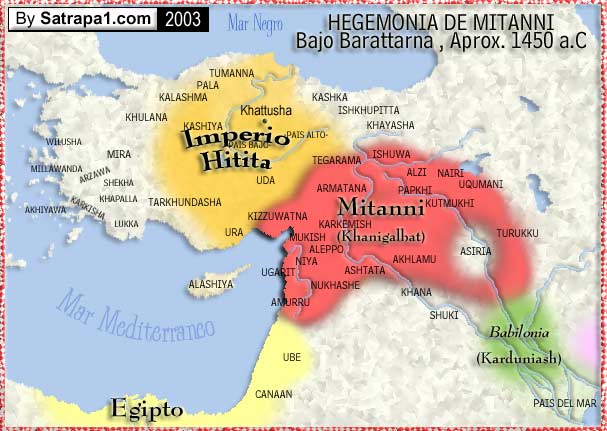


Immediately after coming to throne, the pharaoh went on a military quest to the northeast where during Hatshepsut government, a anti-egyptian coalition has been created.
Hatshepsut let to the local rulers Egyptian provinces in Syria and Palestine which paid tribute to her. King of Kadesh gathered some of them and raised the uprising.
In the coalition 330 states took its place, and the base city was Meggido city on the river Orontes.
During his first (out of seventeen) campaign in 1469. BC Thutmosis conquered Meggido. In his fifth quest he conquered the city Ullaza, and in the seventh quest he had to re-conquer the city again.
During his eight quest he penetrated in to Mittani and defeated Mittani military. Soldier Amenemhab reported about this events who, after the victory of Kadesh in Palestine, was promoted to a higher rank.
He fought in Nubia and expanded his authority all the way to the fourth cataract. Thus, Egypt became the driving force. For the first time it was developed serious diplomacy, and standing army is kept.
His Tomb is located at Biban el Moluk and two of his obelisks were found. One of them is located in Rome while other in Istanbul.
Amenhotep II (Amenofis II) (1427 – 1400)
He was son of Tuthmosis III and his main wife Merytre. Immediately after the death of Tuthmosis, thirty cities south of Kadesh made rebellion and Amenhotep immediately had to intervene militarily.
He defeated the rebels and seven of their leaders he cling to the walls of Thebes. He led two more military campaigns (in seventh and ninth year of the reign). Although Thutmose III. established authority in the northeast, the king of Kadesh, however, was determined to stop further penetration of Egypt in this area. Thutmose III had to almost every year to attack again.
Hittites more and more threatened Mittani, eventually hostility between Egypt and Mittani converted into alliance.
Tuthmosis IV (1400 – 1390)
During his time Mitanni was successfully defended against the Hittites, and its ruler Artatama send his daughter to be Pharaoh wife.
Amenhotep III (Amenofis III)(1390 – 1352)
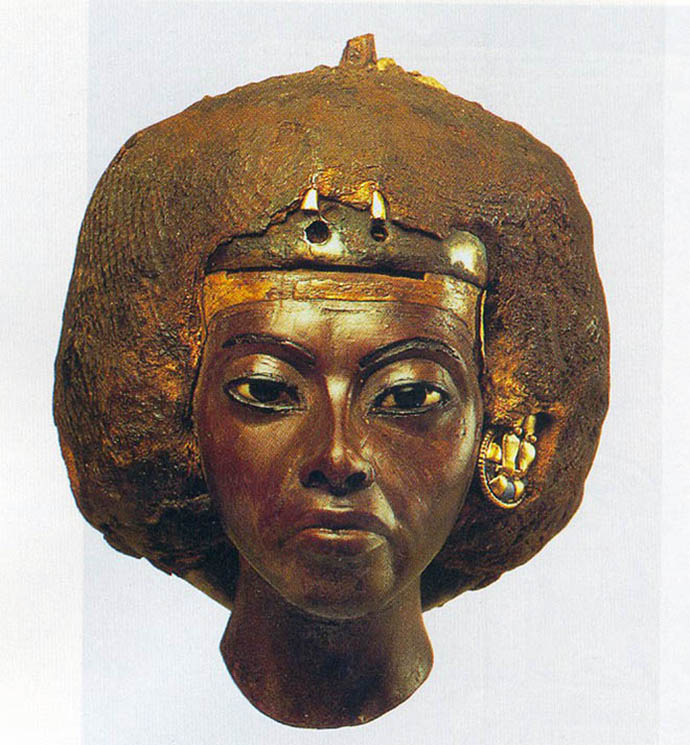


The alliance between Mittani and Egypt turns into friendship. King Shuttarna sent a princess Gilukhipa to be Pharaoh’s wife, and his successor Tushratta, send princess Tadukhepa. In his harem, Pharaoh had three hundred concubines.
However, Ahmenhotep III main wife was Tiye; daughter of Yuya and Tjuyu. Queen Tiye (she was from Nubia; black woman) she had a major role in political life. She closely monitored all the political events around Egypt. Although his impact in Asia started to decline, Amenhotep III did not going on military campaigns (archives from Amarna); he sent only small units. This later proved to be very harmful for Egypt. Amenhotep III built a sacred lake for her in Birket Habu, and in western Thebes he built palace Malkata. Also nearby, he built a memorial temple. In front of the temple, he placed two colossi, which represent two pharaohs on the throne. Greeks name for them is Colossi of Memnon.
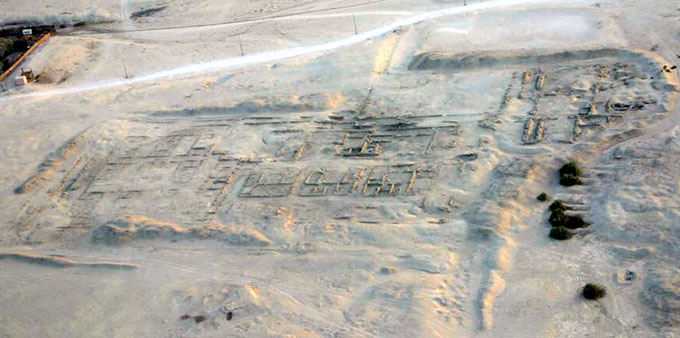


Due to the special airflow, colossi in the early dawn emitted sounds. Sounds were probably caused by the sudden change of the morning air circulating through specially designed openings. One of them was making a sound all the way to the period of Roman Empire, but after Romans restoration, they became quiet forever. A great Wiseman from the Amenhotep III. period had the same name as king Amenhotep. He was Hapu’s son. His cult was later, rose on to the level of divine. Pharaoh was forced to wage war only in Nubia while all relations on the north were diplomatically solved. The greatest period of architecture and art prosperity was during the reign of Amenemhat, as well as peaceful development of the country.
